Sled Models Item Number: E7473-0 from the National Museum of Natural History
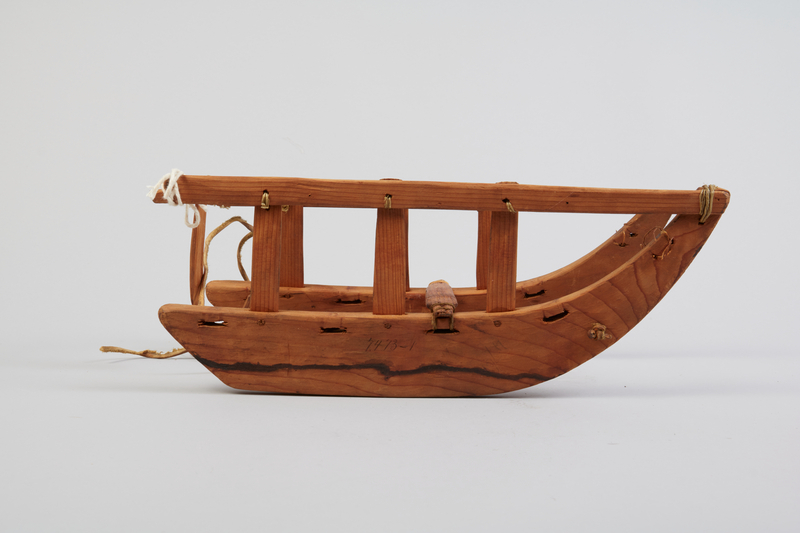
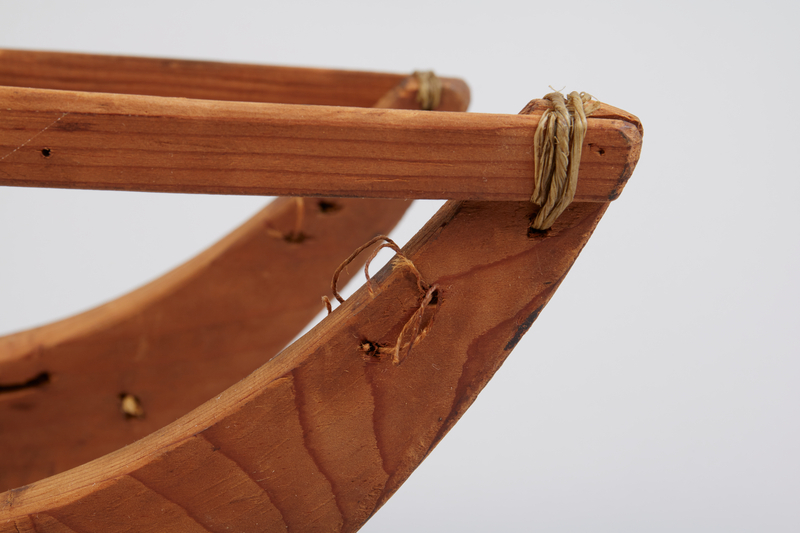
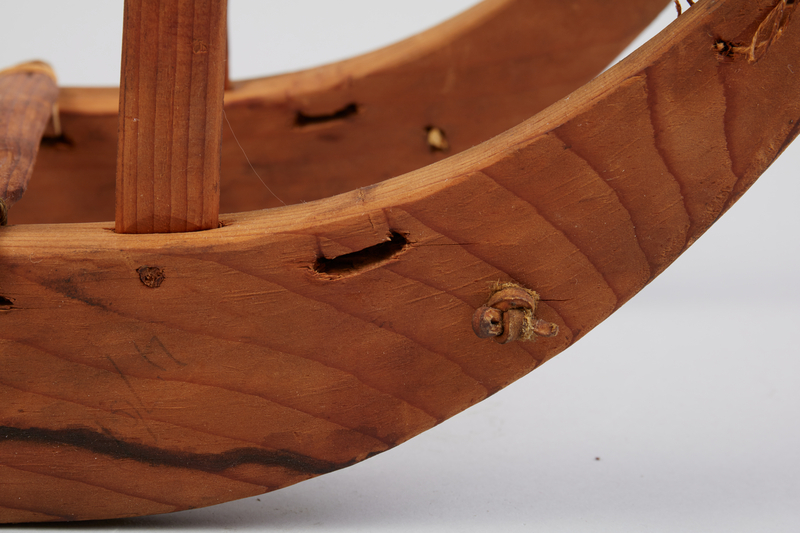
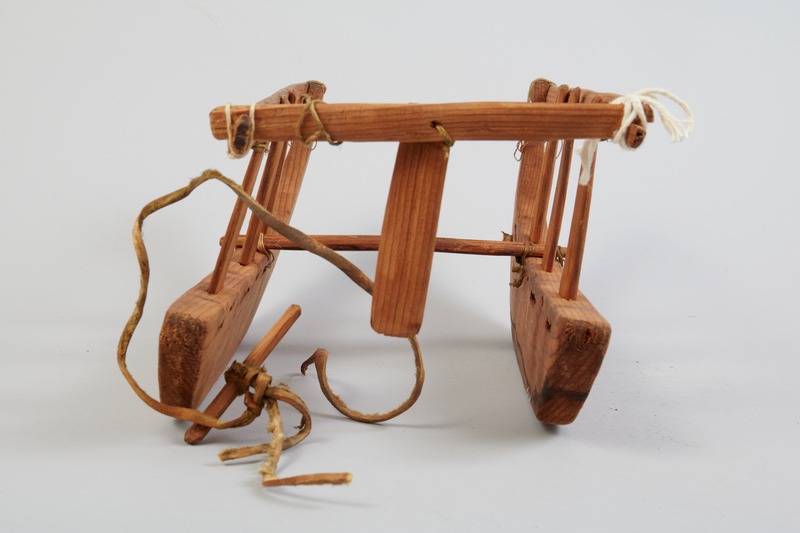
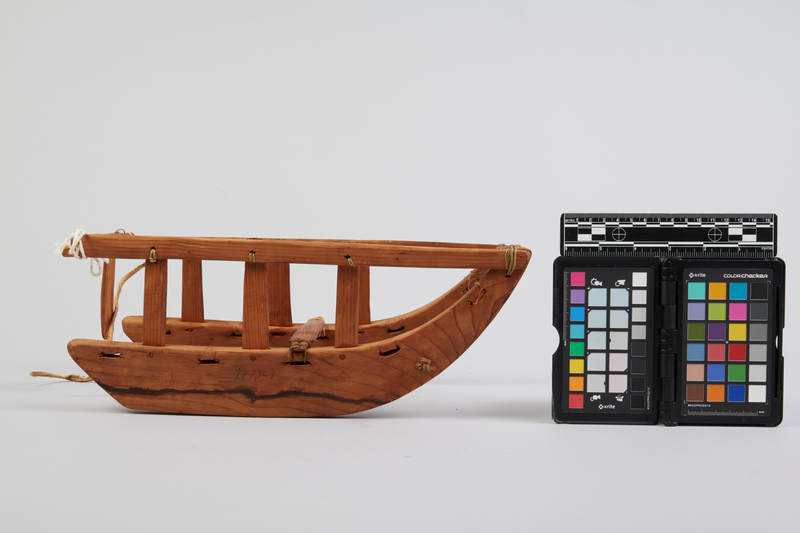
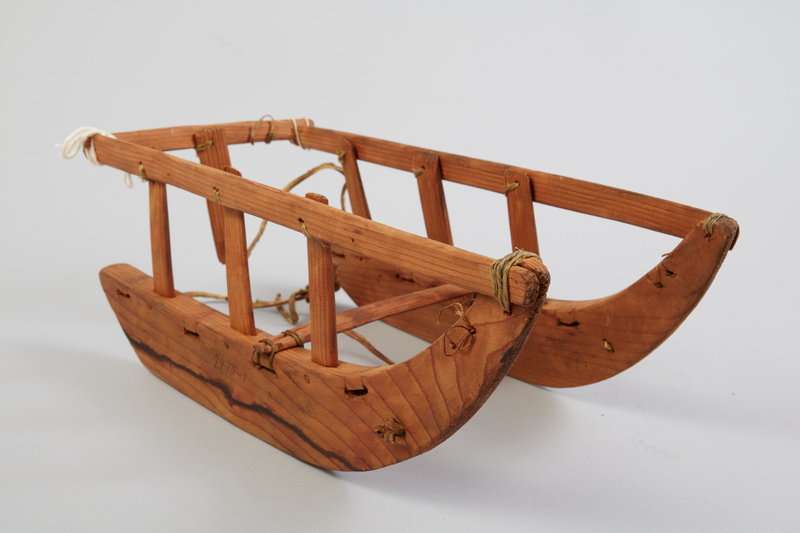
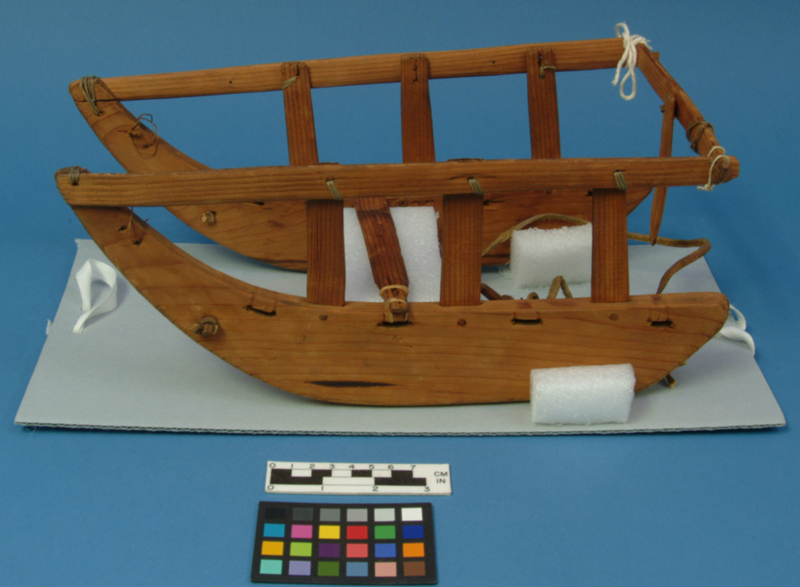
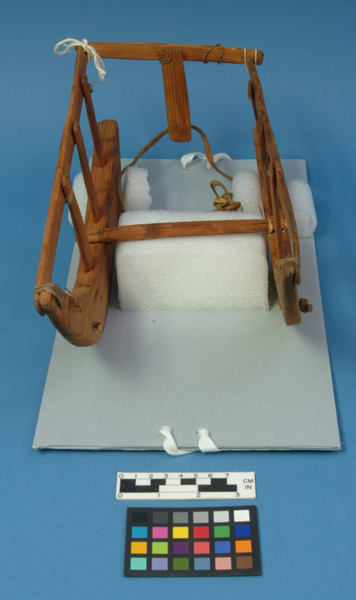
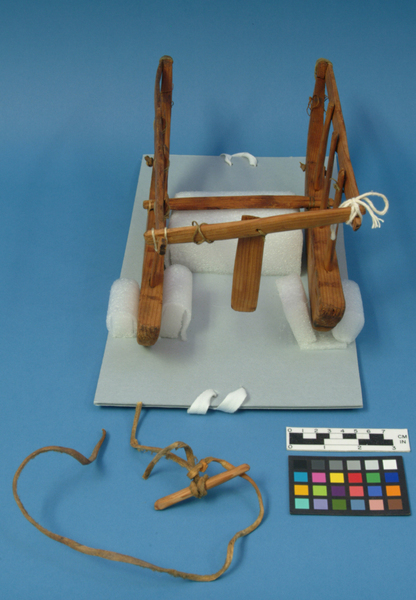
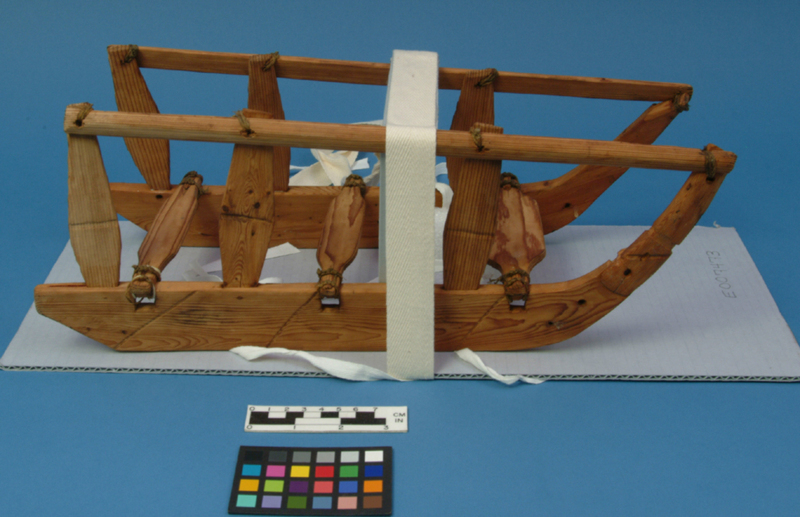
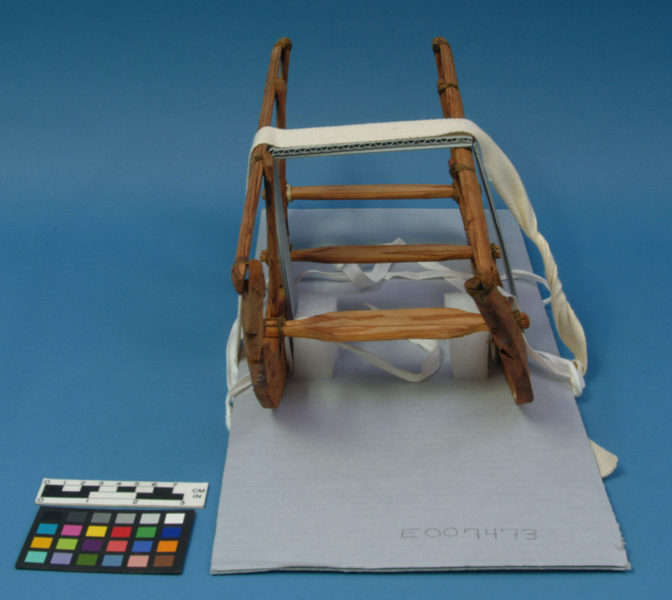

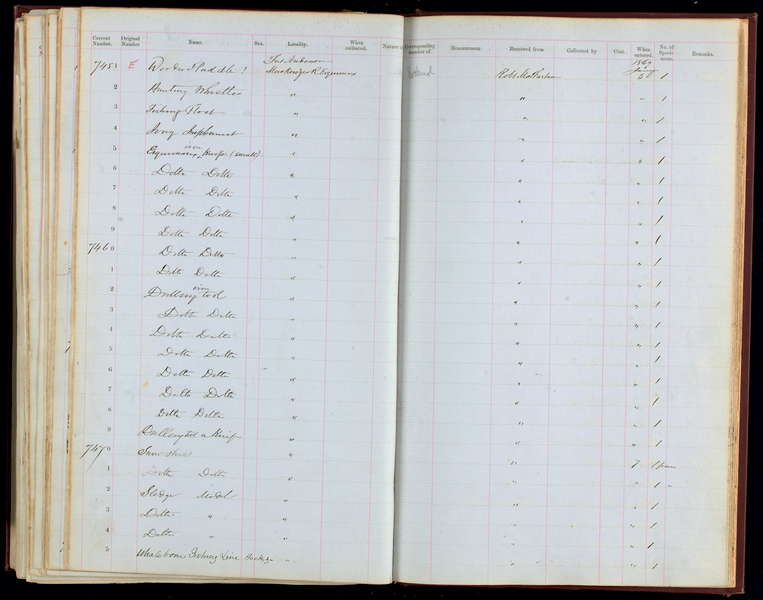
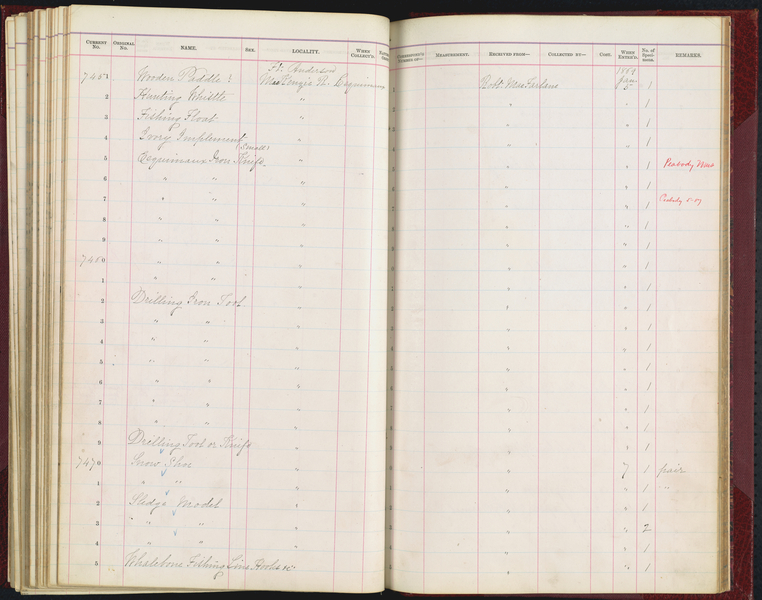
Notes
There are currently two sled models with this number. It is possible that sled # 2 of 2 might be incorrect #; possible alternate number might be E1639?SLED # 1 OF 2 ILLUS. IN USNM REPT, 1894; FIG. 253; P. 563. Identified there: "... model of a sled from Anderson River, northern Canada. The runners are wide, separate planks, curved up in front and beveled in the rear. Five crosspieces are attached to the top of the runners by means of sinew cord passing over the ends of the slats and through very rudely executed mortises near the edge of the runners. The winding of the thread passes over the slats outside and inside of the runner so as to form an excellent yielding brace. Mortising is very uncommon among aboriginal peoples, and therefore the needs of the fur traders are to be suspected. The front crosspiece is fastened on through two sets of holes instead of mortises. Between the slats on top of each runner six posts are mortised and fastened down with treenails, and a similar post is mortised through the upper surface of the hind slat. Along the top of these posts, at the sides and at the rear, are tight rails which extend out and are fastened to the upturned ends of the runners. The rails are sewed to the posts by means of babiche. Length, 14 inches."Sled # 1 of 2: Source of the information below: Inuvialuit Pitqusiit Inuuniarutait: Inuvialuit Living History, The MacFarlane Collection website, by the Inuvialuit Cultural Resource Centre (ICRC), Inuvik, N.W.T., Canada (website credits here http://www.inuvialuitlivinghistory.ca/posts/12 ), entry on this artifact http://www.inuvialuitlivinghistory.ca/items/195 , retrieved 1-31-2020: Model of a 'railed' or 'basket' sled (qamutivialuk), made from wood. The runners are relatively short, and have long upturned ends. Each of the runners has four slots near the deck edge for attaching crosspieces, only one of which remains in place. The crosspiece is a flat piece of wood that is tapered at each end. It is attached by a sinew lashing that loops over each end where they project beyond the runners, passes through a slot in the runner, and then loops over the crosspiece again just inside the runner. Rails are fastened to the upturned tips of the runners and to uprights set into mortise joints cut into the tops of the runners. A broken upright that remains attached to the back rail likely had been set into a mortise cut into a crosspiece, now missing. A line made of hide for towing the sled had been attached to the front of each runner.Sled # 2 of 2: Source of the information below: Inuvialuit Pitqusiit Inuuniarutait: Inuvialuit Living History, The MacFarlane Collection website, by the Inuvialuit Cultural Resource Centre (ICRC), Inuvik, N.W.T., Canada (website credits here http://www.inuvialuitlivinghistory.ca/posts/12 ), entry on this artifact http://www.inuvialuitlivinghistory.ca/items/312 , retrieved 1-31-2020: Model of a 'railed' or 'basket' sled (qamutivialuk), made from wood. The runners have long upturned ends, one of which is a separate piece attached to the runner. Four crosspieces are attached to the tops of the runners by sinew lashings that loop over each end where they project beyond the runners, pass through a corresponding slot in the runner, and then loop over the crosspiece again just inside the runners. Three uprights are set into mortise joints along the tops of each runner, and side rails are connected to these uprights and to the tops of the upturned ends of the runners.More information on sled models here: http://www.inuvialuitlivinghistory.ca/item_types/72: The MacFarlane Collection contains small models of several types of sleds used by Inuvialuit for travelling on snow-covered ground. These models may have been commissioned since full-size sleds would have been difficult to ship the the Smithsonian Institution.
Item History
- Made in Northwest Territories, Canada
- Collected in Northwest Territories, Canada
- Received from Roderick R. MacFarlane on January 7, 1869
What
- Name
- Sled Models
- Identification Number
- E7473-0
- Type of Item
- sled model
Who
- Culture
- Eskimo, Inuit and Inuvialuk
- Received from
- Roderick R. MacFarlane
Where
- Holding Institution
- National Museum of Natural History
- Made in
- Northwest Territories, Canada
- Collected in
- Northwest Territories, Canada
When
- Acquisition Date
- on January 7, 1869
Other
- Accession Number
- 69A00012